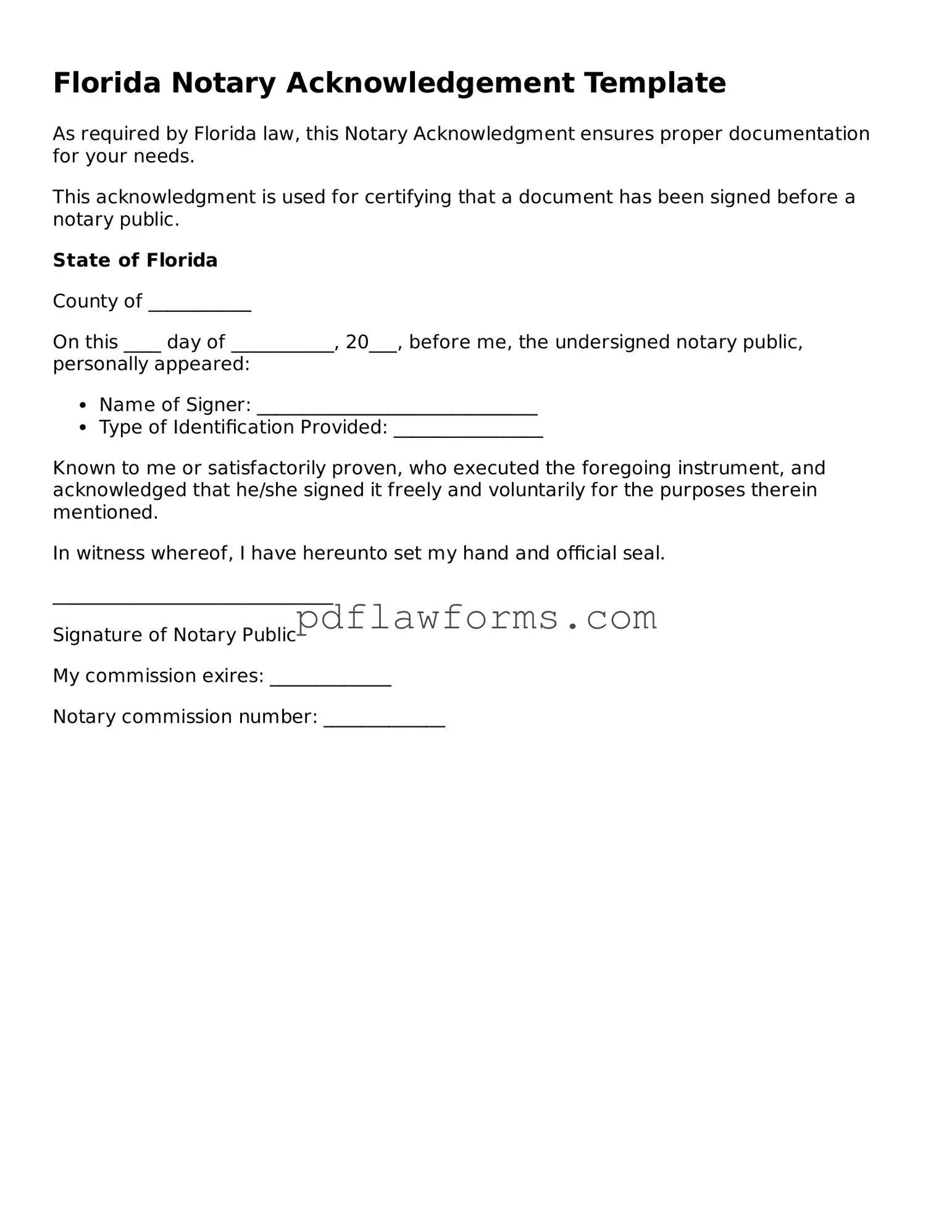The Florida Notary Acknowledgement form plays a crucial role in the legal landscape of the state, serving as a vital tool for ensuring that documents are executed properly and recognized as valid. This form is essential for various transactions, including real estate deals, contracts, and other legal agreements. By providing a clear statement that the signer personally appeared before the notary and acknowledged their signature, the form helps to prevent fraud and protect the integrity of the document. The notary public, a trusted official, verifies the identity of the signer, ensuring that they are acting willingly and are aware of the implications of their actions. This process not only enhances the credibility of the document but also establishes a clear chain of accountability. Understanding the nuances of the Florida Notary Acknowledgement form is important for anyone engaged in legal or financial matters within the state, as it can impact the enforceability of agreements and the overall transaction process.
